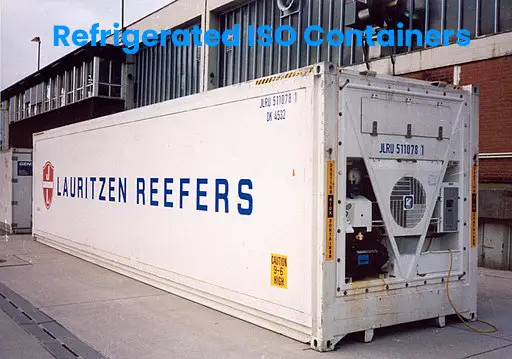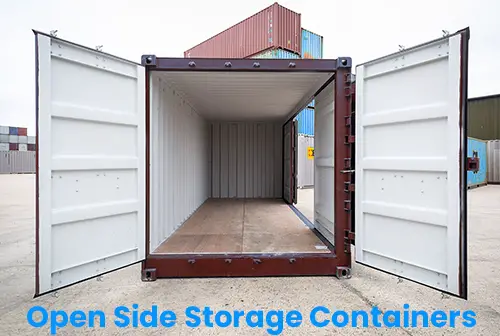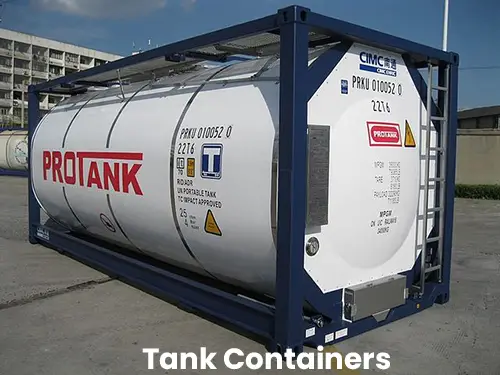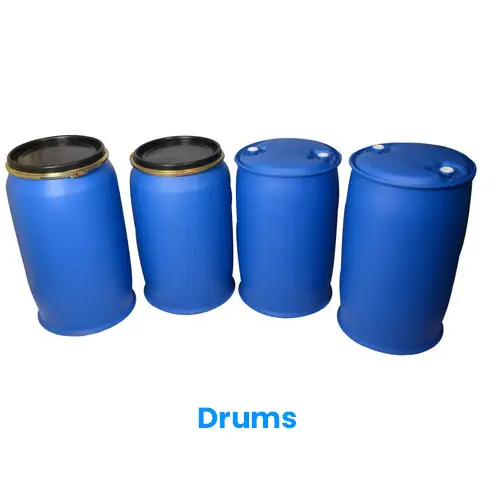What Are The Different Shipping Container Types, Units, Sizes & Designs Used In Cargo?

It won’t be far-fetched to say that the cargo ships are the lifeline of the world economy. There are many shipping container types, units of varying sizes used in the cargo ships catering to all kinds of freight from cars to clothes. Without them, the seamless transportation of goods across the globe would halt to a standstill.
The shipping industry, one of the biggest transportation industries in the world, requires the contribution and integration of several aspects. Modern-day ships are extensively used to transport valuable cargo like fuel, food, grains, metals, vehicles, chemicals, weapons, goods and machinery. Depending upon the type of freight a ship is transporting, several different types of container units are used. The main aim behind using these is to keep the cargo safe and unharmed throughout the voyage.
This article discusses the different kinds of container units that are used for shipping cargo. They have been described in brief as follows.
1. Open Top Container

As the name suggests, open top containers are the kinds of shipping units which have a top that can be easily removed to ship goods of any height. They are mostly used to transport cargo such as scrap metal or timber which can be loaded into the container from the top. The top of these units is usually covered by a tarpaulin and not a solid roof. They also have end doors. The end doors provide the container with flexibility for loading and discharging operations. They also normally come in length of 20 feet and 40 feet, but the length may also vary depending on the manufacturer of the container, the age of the container and the owner of the container. They are also normally made of steel and are strong and durable.
2. Dry Storage Container

Dry storage containers are the kind of containers that are the most commonly used in ships. They come in various sizes. The International Organisation has standardized all the sizes of dry storage containers for Standardization or the ISO. They normally come in the lengths of 10 feet, 20 feet, and 40 feet. As the name suggests, they are made in such a way that they are suitable for transporting dry goods. They cannot be used for transporting perishable items or chemicals that need to be refrigerated as they do not allow controlling of temperature. These containers are generally made out of aluminum or steel. They are also very heavy and are one of the most important shipping container units as well.
3. Double Door Containers

Double door containers are the kinds of storage units which have two doors, as the name suggests. One of the doors is at the end of the container, and the other is along the side of it. They help in making a wider room or space for the unloading and loading of materials especially the ones which are large. Double door containers also normally come in length of 20 feet and 40 feet, but their length may also vary depending on the manufacturer of the container, the age of the container and the owner of the container. These containers are constructed out of iron or steel for maximum durability and strength. They are mostly used for the transportation of bulky goods. They make it convenient for the workers to load and unload the container because of their suitable structure.
4. Refrigerated ISO Containers

These are the shipping containers standardized by the International Standardization Organisation or ISO. As the name suggests, these are the kind of shipping containers which are temperature regulated and normally have a low controlled temperature. The temperature is lower than the temperature outside. These kinds of shipping units are specifically designed for the transportation of substances like fruits and vegetables or other perishable goods over long distances at sea so that they do not get ruined. They keep the goods at a specifically required temperature throughout the journey. These containers may vary in size but usually, come with a standard length of 20 feet or 40 feet. These containers are also well insulated so that the temperature conditions inside the container do not change.
5. Thermal Containers or Insulated Containers

Thermal containers are very much similar to refrigerated containers. They are temperature regulated containers which are used to transport perishable goods. The temperature in this container is adjusted to be higher than the temperature outside it, unlike refrigerated containers. They are made of a kind of material which allows them to last for a long time without being damaged by exposure to the high temperature. Insulated containers are specifically designed to transport such goods over long distances. They are also well insulated so that the temperature conditions inside the container do not change. They keep the goods at a specifically required temperature throughout the journey. The ISO standardizes these containers.
6. Flat Rack Container

Flat rack containers are simple shipping storage units. They have collapsible sides. That is their sides can be easily folded so that a flat rack can be made. These can be used to ship a great variety of goods. They do not have a top and only two sides. Flat racks are normally 20 feet or 40 feet in length, but the length can also vary depending on the manufacturer of the unit or the time at which it was made. These are made out of steel and are strong and durable. They are the most suitable for goods which are heavy or those that need to be loaded from the top or sides. Such goods can include pipes or other machinery. Some kind of flat rack container can also have non-collapsible sides.
7. Tunnel Containers

Tunnel containers are the kinds of container storage units which have been provided with doors on both sides of the container like tunnels. In this manner, the goods can be accessed or loaded from both sides with great ease. Hence, they are very efficient when it comes to loading and unloading of goods because the workers can access the goods from both sides. They are made of steel to increase their durability and strength. Tunnel containers are also dry storage containers and do not have temperature control and hence cannot be used for storing perishable items or chemicals that require refrigeration. They also normally come in length of 20 feet and 40 feet, but their length may also vary depending on the manufacturer of the container, the age of the container and the owner of the container.
8. Open Side Storage Containers

As the name suggests, open side storage containers are the kinds of storage containers which have an open side. This means that the sides of the container are provided with doors which enable the workers to completely open them. They are useful for loading and unloading materials that require wider storage space. Open side storage containers are made of metals like steel for maximum strength and durability. They are quite similar to dry storage containers. The only difference is that dry storage containers have doors that open at the short end while open side containers have doors that open from the longer end. They also normally come in length of 20 feet and 40 feet, but the length may also vary depending on the manufacturer of the container, the age of the container and the owner of the container.
9. Tanks

Tanks are another kind of container storage unit. This type of containers is deployed for the transportation of materials which are in the form of liquids or to be more precise, fluids. They may also be used to store and transport goods like sugar but are normally exclusive to liquid goods. Tanks are critical because they form a large part of the entire shipping industry. They are usually made up of steel to increase the strength and also by anti-corrosive materials to increase their durability and protect the goods stored inside. Many times they are used to transport oil and fuel. Some tanks may also be used to transport gaseous material, but this is very rare. They come in various sizes.
10. Car Carriers

Car Carriers are the kind of container storage units which are specifically designed for the transportation and shipment of cars over long distances by sea routes. Cars are not usually transported by ship. However, in some cases, shipping arrangements need to be done for the vehicle to be transported. Transportation of automobiles on the sea is usually done with roll on roll off shipping arrangements which are cheaper than car carrier shipping containers. They have collapsible sides which make it convenient to fit a car inside the container without damaging it. They can come in various sizes and dimensions. Even though these containers are known as car carriers, they can be used to transport any kind of automobile vehicles.
11. Intermediate Bulk Shift Containers

Intermediate bulk shift containers are storage shipping containers which are specifically made for the transportation of intermediate goods. They can be used to carry large amounts of materials which can include liquids or semi-solids and are usually used to shift the kind of material which requires to be further packed and sent off to a final spot after arriving at its destination. They are also reusable and can come in various sizes, dimensions, and colors. Some advantages of these containers are that they are relatively cheap to ship, they are highly organized, mobile and integrated. They are also very durable and provide a consistent and reliable way to store material. They are often used to transport bulk chemicals, raw materials, food syrups, petrochemicals, paints, and pharmaceutical compounds.
12. Drums

Drums are circular shaped shipping container units. They are made up of materials like steel, hard plastic, fiber or weight metals. Drums are strong and durable. These containers are small in size but have a large volume due to their shape. Hence, they required extra space. Drums are also called barrels in common language. They are mostly used to handle and transport bulk materials, usually liquids. Drums can be used to ship petrochemicals or other liquid products as well. Most of the material that they transport is dangerous or highly inflammable. They can come in various sizes. Normally, each drum has a capacity of 200 liters.
13. Platform Containers

Platform containers are the kinds of containers which do not have any sides or roof. They are a base or a platform like the name suggests. They are not very commonly used. When they are used, they are normally used for cargo which has an odd size and cannot be fitted into any other type of shipping container units. They come in a standard length of 20 feet or 40 feet, but the length can also vary depending on the demand of the manufacturer or the client.
14. Cargo Storage Roll Containers

Cargo storage roll containers are a special kind of containers. They are used for transporting sets or stacks of materials. Cargo storage roll containers are foldable. They are made up of wire meshes that are thick and strong and also rollers that enable free and easy movement. They come in various sizes and various colors of wire meshes and look attractive. These are some of the unique storage container units in the shipping industry. They are expensive to make, and transport and hence, many companies avoid the use of these shipping units. Still, these are some of the most important shipping and storage units in the industry because certain loads specifically demand these kinds of containers.
15. Half Height Containers

Half height containers are another important kind of shipping container. These are the kind of shipping containers which are half the height of full sized containers. They are mostly made up of steel to increase strength and durability. Half height containers are normally used for the transportation of goods like coal, stones or other goods which require easy loading and unloading. They are used to transport heavy cargo, vehicles, pipes, tools and other equipment. Open half height containers are also available which can be used to load the goods from the top side. They can also be manufactured according to the requirements of the customer and hence come in different sizes as well as structure.
16. Special purpose containers

Special purpose containers are not like ordinary containers. They are the containers that are customized and specifically made for particular purposes usually at the request of the manufacturer or the client. Due to this, the material used for the composition of the container and its construction depends on the kind of purpose that they would serve. Most of the times they are used for security purposes. They can come in any shape or sizes. Most of the shipping companies do not make these containers or rather avoid their use because they are expensive to make and to transport and cannot be used for purposes other than the ones they are currently serving. They are however still in use because certain goods demand a specific type and size of containers.
17. Swap Bodies

Swap bodies are a special kind of container shipping units. They are mostly used in Europe and are not standardized. However, they are quite useful. They have a strong bottom part and a top which is convertible. This makes them suitable to ship many different kinds of products. The designs of these units are such that they do not waste any space. That is, they are optimized to minimize empty weights. They are lifted from the bottom corners. Hence, it is inconvenient to use them for shipping, and most of the shipping companies avoid their use.






